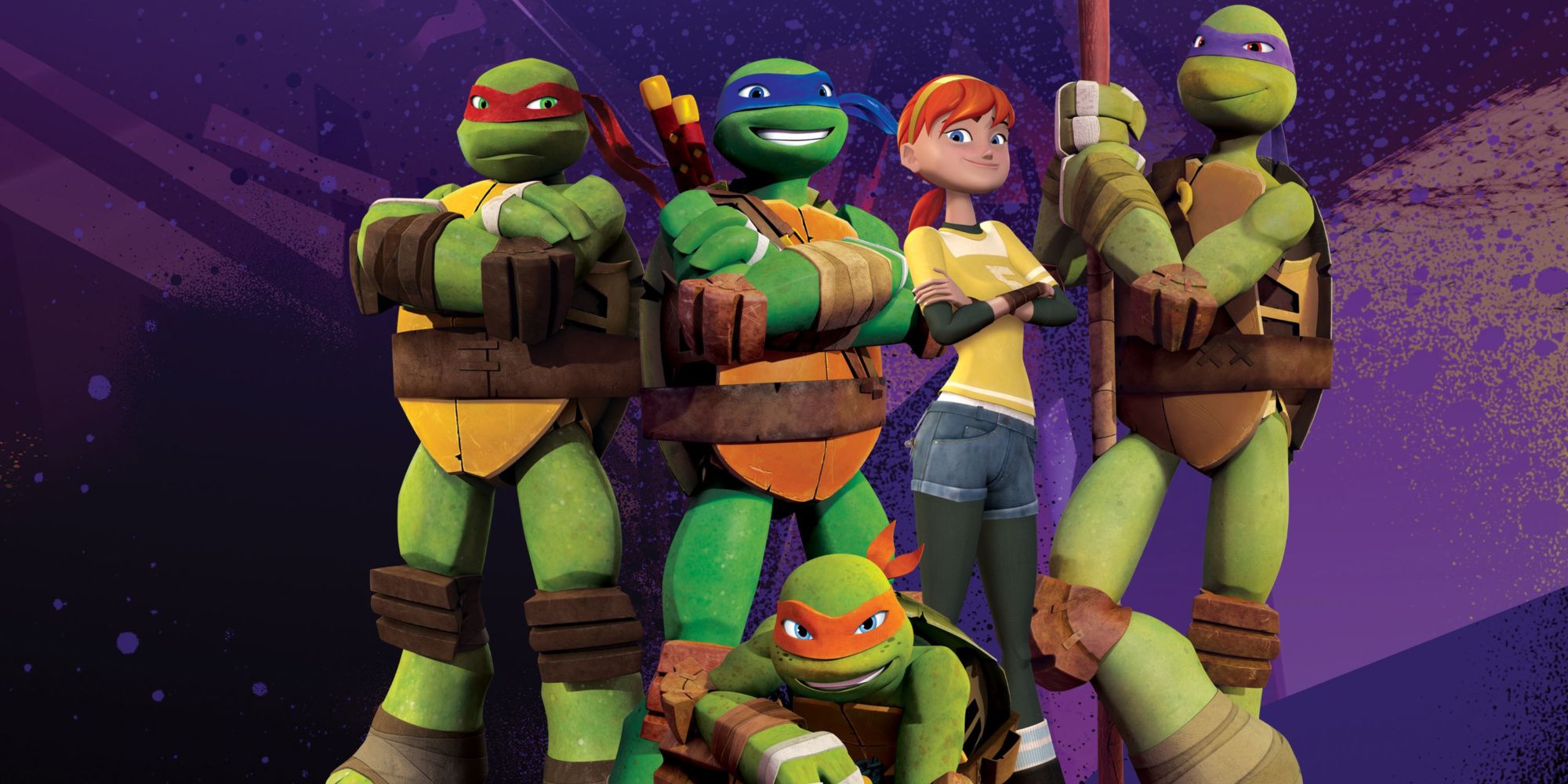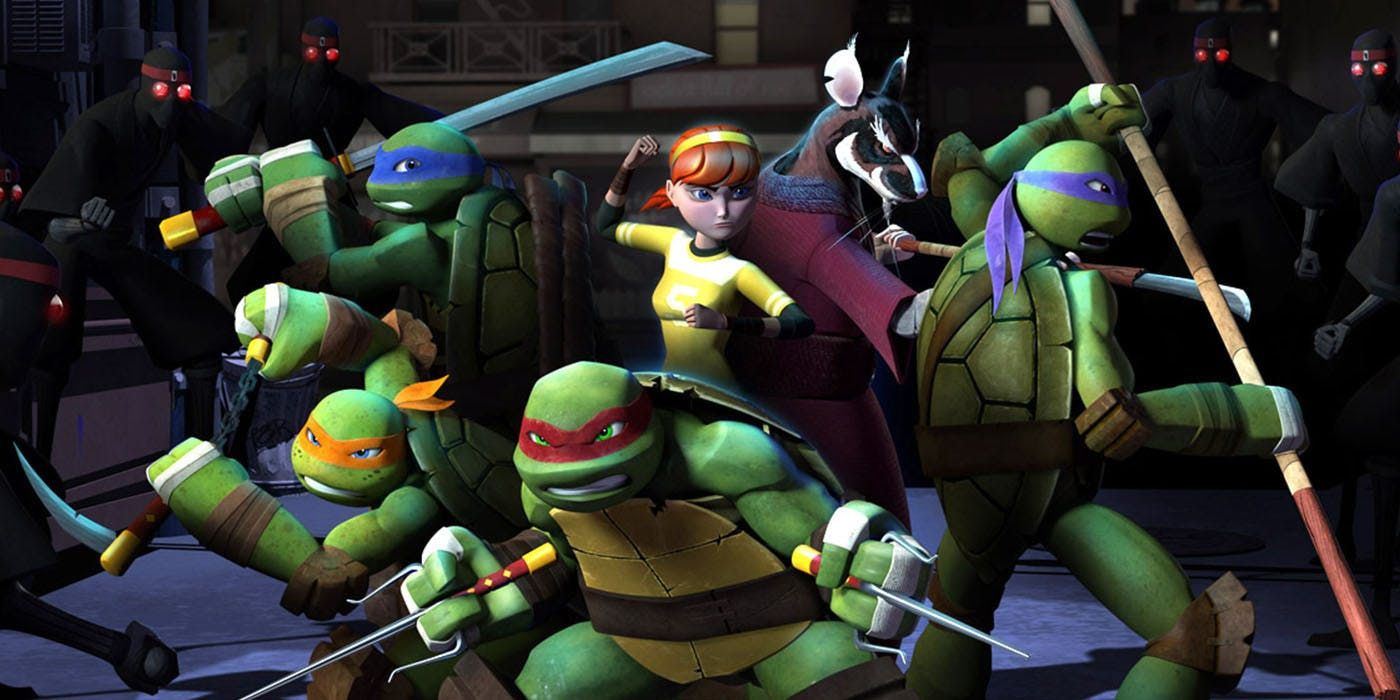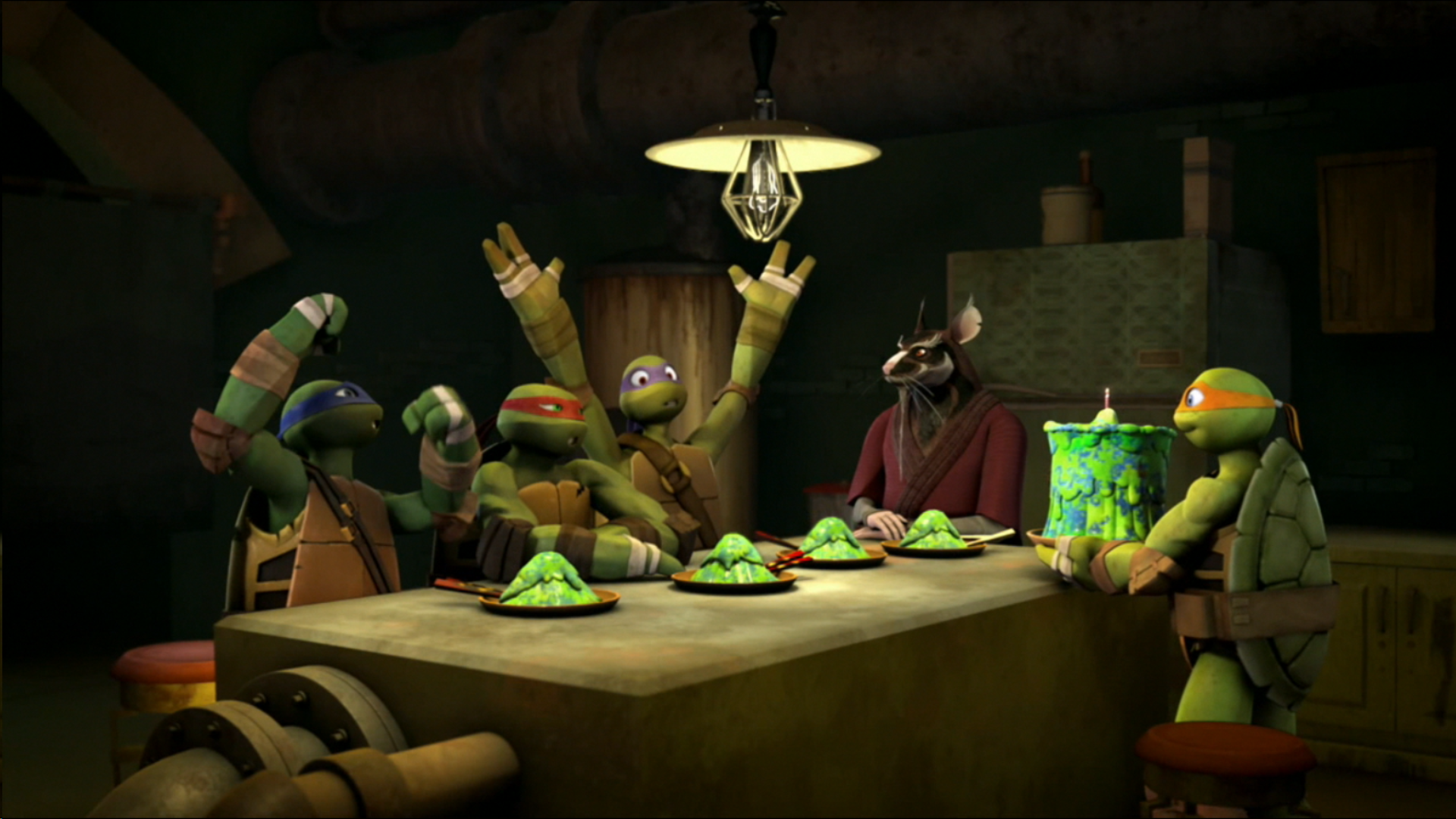Kevin Eastman and Peter Laird introduced the world to the Heroes in a Half Shell in Mirage Studios' Teenage Mutant Ninja Turtles #1 back in 1984. In '87, a kid-friendly cartoon about the mutant heroes spawned turtlemania. There were action figures, live-action movies, more comics (including IDW Publishing's current series, which is consistently solid), another animated show in 2003 and even a live-action series.
Back when it was announced that Nickelodeon was bringing Master Splinter, Leonardo, Raphael, Michelangelo and Donatello back to TV in a new animated series, there were concerns the new take on the Ninja Turtles would be too kid-friendly. Well, the opposite turned out to be true. Nick's Teenage Mutant Ninja Turtles delivered a ton of fan-service and embraced the era when the Heroes in a Half Shell made their debut.
After five great seasons, Teenage Mutant Ninja Turtles came to an end. Now, Rise of the Teenage Mutant Ninja Turtles is on the way, and the upcoming show promises to have "a younger and lighter feel." Before the new show debuts, let's celebrate Nick's 2012 Teenage Mutant Ninja series, because it certainly earned the praise.
The 2012 character designs embraced the idea of "less is more." Instead of making drastic changes to reinvent the four mutant brothers, the show respected the franchise's history while only making small and totally organic changes to each turtle, which reflected their personalities and preferences. For example, Donatello was the tallest but also the skinniest since he's focused on using his mind over his body, but someone like Raphael, who loves rushing into a fight, was the most muscular one of the four brothers and even had a crack in his shell -- which was explained during a heartwarming episode in the final season.
RELATED: Rise Of The Teenage Mutant Ninja Turtles Is Just What the Franchise Needs
No Ninja Turtles story is complete without entertaining action -- "ninja" is in the title, after all. Thankfully, Nick's TMNT's action sequences had legitimately good directing and fight choreography. Whether it was displaying martial arts and melee weapon skills, focusing on stealth or unleashing wild brawls with a variety of tech and abilities, Nick's TMNT never failed to deliver pure popcorn entertainment when the Ninja Turtles and their allies had to face a threat. Longtime fans of the franchise are sure to appreciate several nods to classic action scenes too, like the choreography during the team's rooftop fight against the Shredder, or the time Leonardo had to stand alone against the Foot Clan.
The action is exciting, but at times it's also appropriately emotional and even heartbreaking. After all, this is a show that delves deep into the intense history between Oroku Saki and Hamato Yoshi. At the end of the day, the Ninja Turtles franchise is about the importance of family, and that's a theme that the show kept in the spotlight throughout its five seasons. There were constant jokes and a ton of fun fights, but there were sincere emotions displayed throughout, and the show had legitimate stakes.
Page 2: [valnet-url-page page=2 paginated=0 text='Did You Catch All Of The TMNT 2012 In-Joke References?']
Believe it or not, this is a show that literally blew up the planet (which sent the Ninja Turtles on a space adventure) and gave Master Splinter a permanent death. To simply think of Nick's TMNT as a "kids show" is doing it a massive disservice. It had frequent humor and important lessons for kids, but it also treated its audience with respect by sprinkling in some truly compelling moments.
RELATED: Rise of the Teenage Mutant Ninja Turtles Renewed For Season 2
The show was a clear love letter to not only Eastman and Laird's franchise, but also the era it came from. The animated show was loaded with Easter eggs and blatant nods to iconic franchises from the period. Alien, The Thing and Big Trouble in Little China (complete with James Hong serving as the voice of a villain) are just a few of the many franchises that helped inspire brand-new threats for the Heroes in a Half Shell. As if that wasn't enough, the four dudes also watched campy cartoons that were hilarious nods to Star Trek, He-Man and Voltron. The series ended its timeline with a bold new direction by taking a look at how the Ninja Turtles would survive in an apocalyptic future that was a transparent nod to Mad Max. Still not enough fan-service for you? There was also a three-episode Usaji Yojimbo crossover story!
The show was clearly made by people who had a ton of love for the franchise's history. In fact, they had so much love for it that they reintroduced the 1987 animated series as an alternate dimension for several episodes, which were packed with nostalgia and hysterical commentary on the show, like addressing Shredder's extremely rude personality and how the heroes did their best to not use their weapons to hurt their enemies. The episodes saw most of the original voice cast reprise their roles, too.
Respecting the past doesn't mean 2012 TMNT was afraid to make changes, though. The show stayed true to the franchise's most important elements, but it also went in bold new directions (especially with April) and improved on clearly dated elements. One of the most noticeable -- and surprising -- improvements was the show's handling of Bebop and Rocksteady. These characters were still reduced to being henchmen (until the very end), but they were no longer mere punching bags with basically identical personalities.
RELATED: SDCC: Rise of the Teenage Mutant Ninja Turtles Gets a New Trailer
This wasn't just Raphael and Leonardo's show, either. Donatello and Michelangelo were no strangers to the spotlight, and their allies -- like April, Casey, Splinter, the Mighty Mutanimals and Karai -- were also updated and fleshed out over the five seasons; even the villains had time to tell more of their stories. The dynamic between Leo and Raph tends to be front and center in many versions of the TMNT, but it didn't get in the way of spending time with the rest of the cast and giving all of them genuinely heartwarming and heartbreaking moments.
And then there's the voice cast. Greg Cipes makes Mikey every bit as lovable as he should be. Longtime fans of the franchise can't help but appreciate Rob Paulsen's return to tackle a completely different character. Hoon Lee gives Splinter the respectable and warm voice that he needs as a father figure. Josh Peck is great as a younger and even more arrogant Casey Jones. Sean Astin delivers Raph's rage and heart equally well. Kevin Michael Richardson makes Shredder every bit as fearsome as he should be. Nolan North is a delight as the Kraang. That's just scratching the surface of the cast, which also includes Robbie Rist, Mae Whiteman, Kelly Hu, Mark Hamill, Danny Trejo, Clancy Brown, Corey Feldman and J.B. Smoove.
The 2012 Teenage Mutant Ninja Turtles will make any longtime fan of the franchise smile and feel like a kid all over again. The show may have been a little too dark and scary at times for younger audiences, but it was a phenomenal celebration of Eastman and Laird's franchise and the era it came from. Hopefully Nickelodeon will release a complete series box set because this show deserves one. If you're craving some turtle power, go watch the 2012 show.



